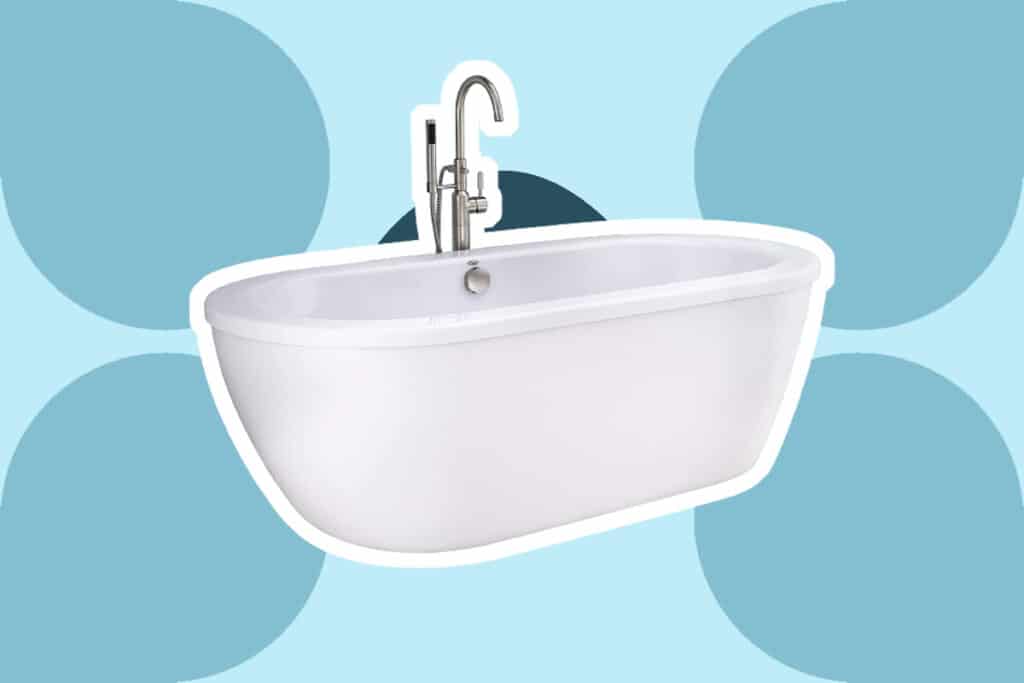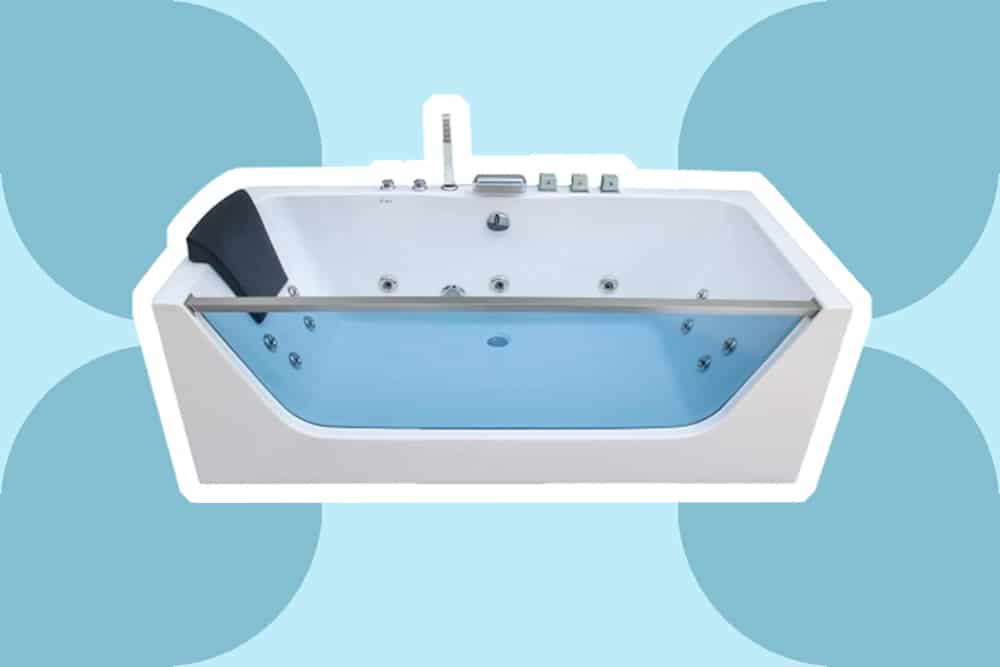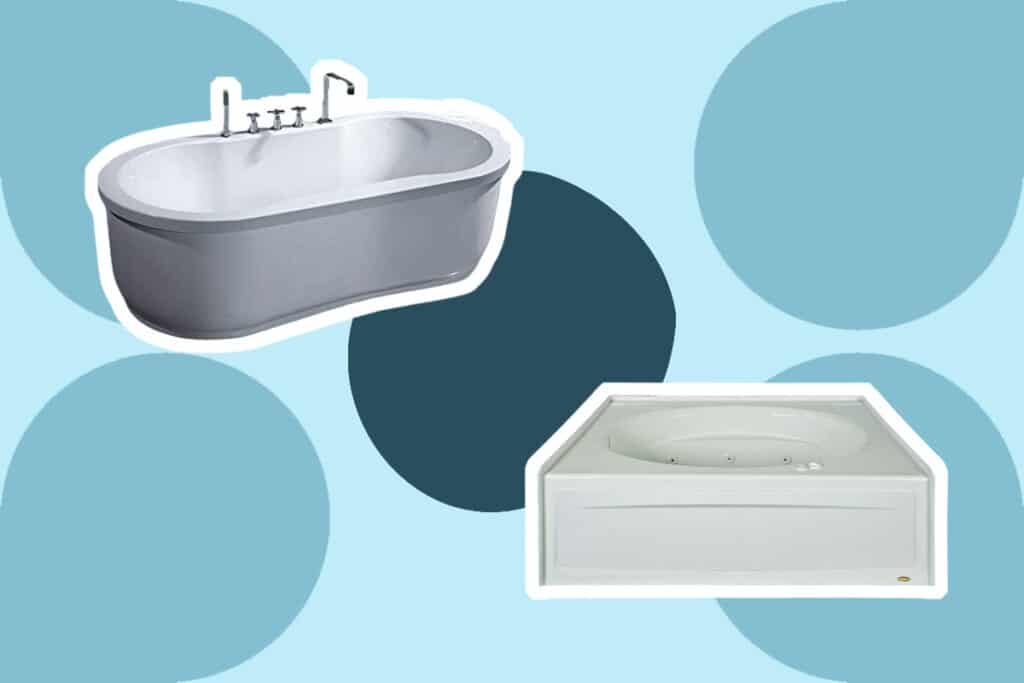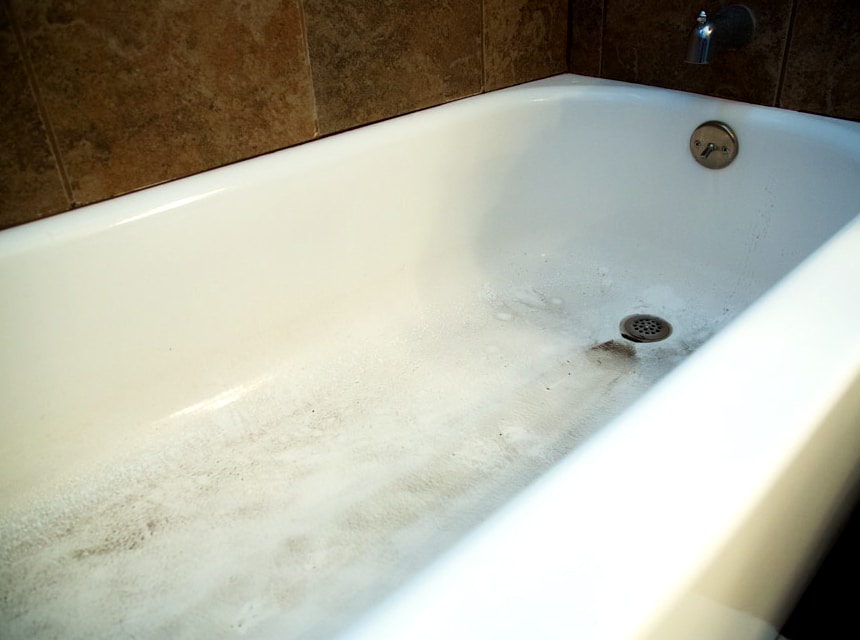

Have you ever noticed that your bathtub has refused to drain like it used to? If you have, there’s nothing uncommon about it because frankly, almost every home experiences this problem. We understand how frustrating that situation can be but the water won’t go away until you unclog your bathtub drain.
Besides, you may be reluctant to call in the plumber due to the costs but you can’t afford to leave your bathtub full of water without taking action. Thankfully, learning how to unclog a bathtub drain is not a complicated exercise as you might have thought. As a matter of fact. common household materials such as vinegar, bleach, baking soda, etc., maybe all you need sometimes. In extreme cases, you may need to opt for powerful cleaners to unclog your drain. In this article, we’ll discuss everything you need to learn about unclogging a bathtub drain.
Before learning how to unclog a bathtub drain with standing water, here are the things that cause the blockage:
Hair is the most common cause of a clogged bathtub drain. When you shower, you can’t prevent some strands of your hair from falling off and going down the drain. These strands of hair often get stuck to the sides of the piping. Then, they build up and attach to dirt from different sources including soap scum to create a blockage.
Even the best corner bathtubs, best freestanding tubs, and best acrylic bathtubs are not immune to clogging from hair and dirt despite their top features.
Besides hair and dirt, damaged pipes can also cause a bathtub drain to clog. When a pipe deteriorates or cracks, some fragments are bound to be created and they build up over time to clog the bathtub drain.
Below, we’ll discuss how to clear a clogged bathtub drain:
If you’re going to learn how to unclog a tub, a plumber’s snake is a pretty accessible and effective clog-removing tool you’ll probably work with. Here’s how to unclog a bathtub drain with a snake: You’ll need to push the tool down the tub drain slowly until you find that you’ve reached the clog. Then, start turning the snake’s handle inside the drain until you’re satisfied.
Next, remove the snake from the drain and run some water to confirm that the clog has been completely removed.
A plunger is another tool that works well to unclog a bathtub drain. Here’s how to unclog a bathtub drain with a plunger: Add some water to the bathtub and apply a small amount of petroleum jelly around the plunger’s rim to create a better suction. Then, push the tool down, and pull it up vigorously several times.
The strands of hair and other grime clogging the drain will suck up out of the hole and you can dispose of them afterward. If the plunger does not seem strong enough, the Omont Drain Clog Remover Tool is designed for tough jobs. Made from stainless steel, the tool boasts a claw that can grip blockages tightly and get rid of them.
If you don’t have any tools to work with, you can still unclog your bathtub drain. Simply remove the drain’s stopper and wear a pair of rubber or latex gloves to clean any buildup of hair or grime off it. After you’re done cleaning the stopper, return it to its place, and run some water to confirm the drain has been unclogged.
If the manual methods do not work to your satisfaction, you should consider using bleach. Here’s how to unclog a bathtub drain with bleach: Remove the drain’s stopper and pour a small amount of bleach mixed with a considerable amount of water into the drain. Then, use your hands—covered with gloves—to clean the dirt off.
You should never forget to use gloves while using this method to avoid bleach exposure which can lead to irritation and cell death Trusted Source Bleach Toxicity Bleach refers to a large class of compounds used to whiten or color-lighten materials. They are frequently used for cleaning and disinfection; bleaches kill or control most types of viruses, bacteria, molds, mildews, and algae. www.ncbi.nlm.nih.gov according to a study by researchers Benzoni T and Hatcher JD.
Additionally, you shouldn’t try to mix bleach with other household chemicals to avoid releasing chlorine gas which can be devastating to human health Trusted Source Facts about Chlorine What chlorine is emergency.cdc.gov according to the United States (US) Centers for Disease Control and Prevention (CDC).
You must learn how to unclog a bathtub drain with a non-removable stopper because you may have such kind of stopper. You’ll need to dissolve the clog with chemicals. Pour the chemical into the drain and let it sit for the specified period before running some warm water into the tub.
Several brands offer chemicals that can help. An excellent example is the Green Gobbler Liquid Hair & Grease Clog Remover which boasts an ultra-thick formula that quickly dissolves hair, paper, soap, and grease in clogged drains according to several users.
Besides working with tools and chemicals, there are natural solutions for unclogging a bathtub drain. Below, we’ll discuss how to unclog a bathtub drain naturally:
If you’re not a big fan of chemicals, here’s how to unclog a bathtub drain without chemicals: Mix one cup of baking soda and one cup of lemon juice. Then, pour the solution down the drain and leave it to settle for about 15 minutes before flushing the tub with hot water.
Baking soda and white vinegar is another all-natural solution for unclogging a bathtub drain. Here’s how to unclog a bathtub drain with vinegar: Pour one cup of soda into the drain and leave it to settle for about 10 minutes. Then, pour a cup of vinegar down the drain. Let the mixture work its magic before pouring hot water down the drain to finish it off.
Whether you want to learn how to how to unclog a bathtub drain with baking soda or how to unclog a bathtub drain with salt, we’ve got you covered. Simply mix a cup of baking soda and two teaspoons of salt. Pour the solution down the drain and let it sit for about 20 minutes before flushing it with hot water.
Unclogging your bathtub drain is something you should never put off or you’ll be risking a much harder problem later on. As you now know, there are several ways to unclog a bathtub drain. Plus, these techniques are quite straightforward once you have the right tools.
Whether you’re learning how to unclog a bathtub drain with hair, how to unclog a bathtub drain home remedies, or how to unclog a slow bathtub drain, this guide is perfect for you. If your knowledge of how to unclog a bathtub drain is not enough, you’ll need to call a plumber.





